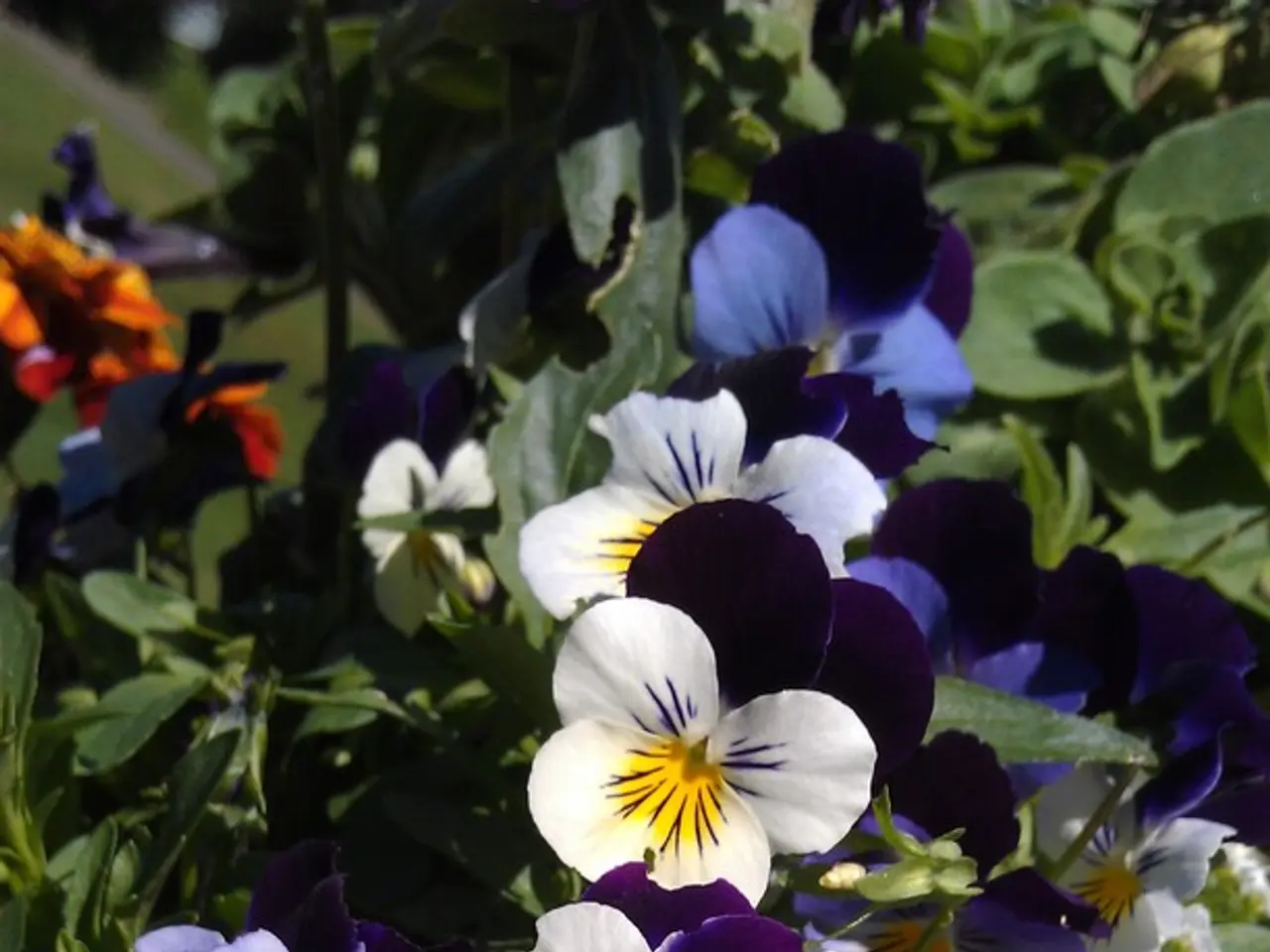Enjoy Perennially Blooming Flowers with a One-Time Planting: 20 Self-Sowing Flowers
In the quest for a vibrant, colorful garden that requires minimal effort, self-seeding flowers are the perfect solution. These hardy plants not only provide stunning blooms but also reseed themselves, ensuring a beautiful display year after year. Here are 20 self-seeding flowers that will transform your garden into a low-maintenance paradise.
Sunflowers (Helianthus annuus)
These tall, bright blooms are a garden favourite. Sunflowers produce large, vibrant blooms and self-seed effortlessly. By leaving some flower heads standing through fall, you can encourage more reseeding. Sunflowers thrive in full sun and are drought tolerant.
Verbena (Verbena bonariensis)
This low-maintenance bloomer is a breeze to grow. Verbena thrives in full sun and well-drained soil, blooms for a long period, and tolerates drought well. Its airy branching habit suits borders and pollinator gardens.
Breadseed Poppies (Papaver somniferum)
These perennials reseed themselves readily when seeds are scattered in late winter or early spring. They provide vibrant color in cottage-style gardens.
Calendula (Calendula officinalis)
Offering bright orange or yellow blooms, Calendula blooms prolifically from spring to frost. Plant Calendula in full sun with well-draining soil and trim fading flowers to encourage reseeding and new blooms.
Echinacea (Coneflowers)
These hardy perennials provide long-lasting blooms and are highly drought-tolerant. Plant Echinacea in a sunny spot with well-draining soil and deadhead sparingly to allow some flowers to produce seeds.
Black-Eyed Susan (Rudbeckia hirta)
Attracting butterflies and bees, Black-Eyed Susan thrives in a wide range of soil conditions. Plant Black-Eyed Susan in full sun, ensuring the soil is well-drained, and leave seed heads intact for self-sowing.
Snapdragons (Antirrhinum)
Adding vertical interest with a variety of colors, Snapdragons are a great addition to any garden. Grow Snapdragons in sunny spots with moist, nutrient-rich soil and allow flowers to mature into seed pods for reseeding.
Hollyhocks (Alcea)
These tall plants add height and old-fashioned charm to any garden. Plant Hollyhocks in full sun with fertile, well-drained soil and water regularly, but avoid overwatering. Hollyhocks reseed abundantly for years of blooms.
Cypress Vine (Ipomoea quamoclit)
This fast-growing annual adds a touch of elegance to any garden. Plant Cypress Vine in full sun or partial shade in well-drained soil and keep soil consistently moist but not waterlogged. Prune regularly to promote bushier growth and more abundant blooms.
Shirley Poppies
Offering delicate blooms in a wider range of pastel shades, Shirley Poppies self-seed readily for effortless renewal. Sow Shirley Poppies directly in sunny spots and provide minimal care once established.
Nigella Hispanica
This plant provides architectural flowers. Nigella Hispanica self-seeds consistently without spreading invasively. Grow Nigella Hispanica in well-drained soil and allow blooms to wither naturally.
Care Tips for Self-Seeding Flowers
- Most self-seeders prefer full sun and well-drained soil. Check specific needs for each plant.
- Once established, many self-seeders tolerate drought well, but young seedlings may need occasional watering.
- Leave some spent flower heads on plants into fall to allow seeds to drop naturally for next season's growth.
- For clump-forming perennials, divide every few years to maintain vigor.
- Choose self-cleaning annuals and perennials that drop their spent blooms without needing deadheading, reducing maintenance.
By carefully selecting and planting these varieties, you can create a thriving, colorful garden while saving yourself the trouble of replanting each season. Enjoy the beauty of these self-seeding flowers and watch your garden bloom year after year with minimal effort.
- In addition to sunflowers, Verbena, Breadseed Poppies, Calendula, Echinacea, Black-Eyed Susan, Snapdragons, Hollyhocks, Cypress Vine, Shirley Poppies, and Nigella Hispanica, consider including care-friendly self-seeders in your garden.
- Shirley Poppies and Black-Eyed Susan are attractants for butterflies and bees, while Cypress Vine adds a touch of elegance.
- To encourage more reseeding from sunflowers, leave some flower heads standing through fall. For Echinacea, deadhead sparingly.
- For a cottage-style garden bursting with vibrant colors, sow the seeds of Breadseed Poppies in late winter or early spring.
- Plant Shirley Poppies directly in sunny spots and minimal care will ensure their continued appearance in your garden.
- To create a low-maintenance paradise in your home-and-garden lifestyle, be mindful of each self-seeding flower's specific sun and soil requirements as outlined in the care tips mentioned.




